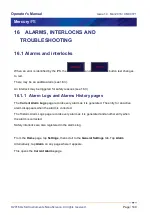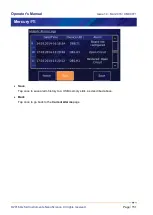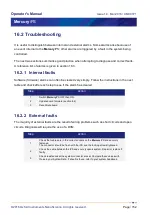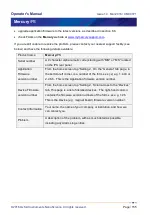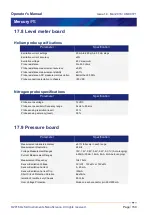
Operator's Manual
Issue 14
/
Mar 2016 / UMC0071
Mercury
iPS
©2016 Oxford Instruments NanoScience. All rights reserved.
Page
152
16.2 Troubleshooting
It is useful to distinguish between internal and external alarms. Some alarms arise because of
an event internal to the
Mercury
iPS; other alarms are triggered by a fault in the system being
controlled.
The next two sections summarise good practice when attempting to diagnose and correct faults.
A reference list of alarms is given in section 16.3.
16.2.1 Internal faults
Software (firmware) alarms can often be cleared very simply. Follow the instructions in the next
table and check after each step to see if the alarm has cleared.
Step
Action
1
Switch
Mercury
iPS OFF then ON.
2
Update board firmware (section 8.6)
3
Recalibrate board
16.2.2 External faults
The majority of external faults are the result of wiring problems such as short circuits and open
circuits. Diagnosis will require the use of a DVM.
Step
Action
1
Check that cables are in the correct sockets on the
Mercury
iPS and securely
fastened.
The connector should be flush with the iPS and the locking screws tightened.
2
Check the cable between the iPS and your cryogenic system. Repair or replace if
faulty.
3
Check resistances at the system connector socket. Compare these values with
those in your System Data. If a fault is found, refer to your system handbook.












